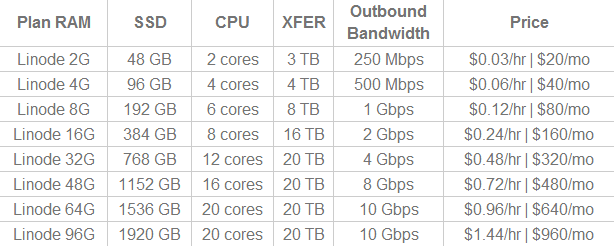Thanks to new entrants like DigitalOcean, the competition in the hosting space has been heating up for the last few months and for the most part, it’s the users who are reaping the benefits of this. In what is surely a reaction to pressure from its competitors, Linode, the established cloud VPS provider, today announced that it has invested $45 million to improve the hardware and networking infrastructure its service runs on.
The company is doubling all of its users’ RAM and moving from regular hard drives to SSDs, while keeping its prices the same. It is also increasing the network throughput to each server from 2Gbps to 40Gbps.
The move to SSDs doesn’t come as a major surprise, given that this is quickly becoming the standard among hosting providers. DigitalOcean built its entire marketing plan around this, and hosts like MediaTemple are also investing heavily in this area. Linode says moving to SSDs will allow it to provision a new server in under a minute while also improving application response time.
The company also moved to new processors (Intel Xeon E5 2680v2 Ivy Bridge). This means the typical virtual machine on Linode gets fewer virtual CPUs, but that’s not likely to affect performance, and Linode says it also greatly reduced the contention on these new machines compared to its old structure.

Prices for new Linodes still start at $20/month (or $0.03/hr). The most basic servers now include 2GB of RAM, 48GB of SSD space, 2 virtual CPU cores and 3TB of transfer with 250 Mbps of outbound bandwidth.
The company tells me this update is meant to relaunch Linode from a VPS provider to a full-blown cloud-hosting provider that can take on AWS, Rackspace and IBM. Earlier this year, Linode also announced its move away from monthly billing to a metered billing model that only charges users for the time their servers are actually up and running. That’s pretty much the standard model for cloud service providers, though it’s unclear if Linode plans to push its service offerings beyond the standard servers it currently provides.
Existing Linode users can now upgrade their servers from their dashboards (which includes about 20 minutes of downtime during the migration). The only exception here are users who run 32-bit kernels. They will have to wait another two months or so before they can switch. All new Linodes now run on the new hardware.
Image credit: Bob Mical under CC 2.0 license
